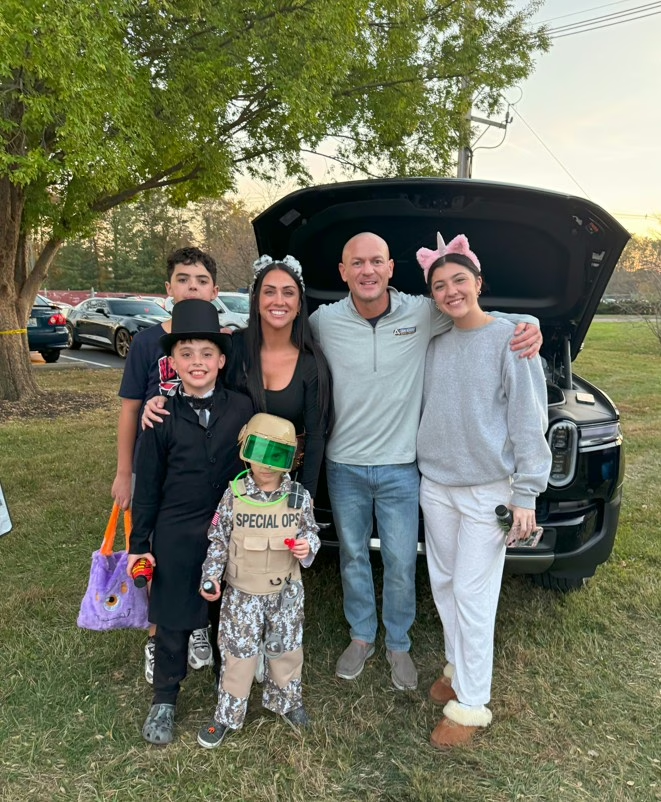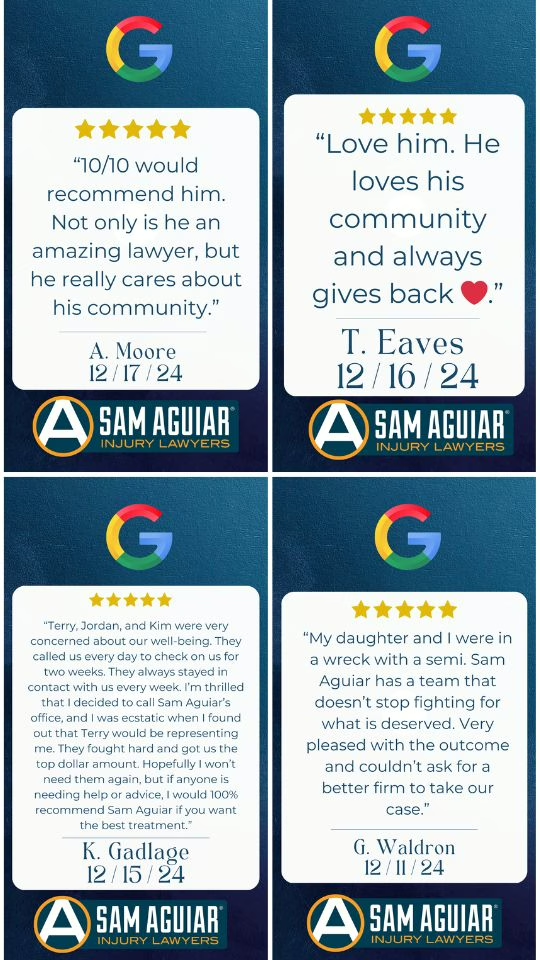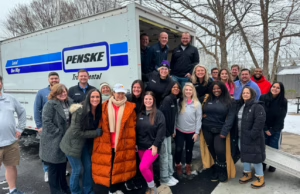Trends and Strategies
In 2024, we tested several forms of marketing. Some worked. A lot did not. Now we are identifying personal injury (PI) law firm marketing trends anticipated for 2025. We tested various marketing approaches, including traditional, digital, community-based, and referral strategies, while exploring the rising influence of artificial intelligence (AI) in this domain. We looked into industry spending patterns across diverse marketing channels. We devised a comprehensive guide to strategizing and executing successful marketing campaigns to enhance a law firm’s visibility and client acquisition.
Claim Your Google Business Profile
Claiming your Google Business Profile (GBP) is crucial in establishing your personal injury law firm’s online presence. A GBP listing provides essential information about your law firm, such as your name, address, phone number, and hours of operation. This information helps potential clients find and contact your law firm when searching for personal injury lawyers in their area.
To claim your GBP, follow these steps:
Sign in to Google My Business: Log in using your Google account or create a new account if you don’t have one.
Verify your business: Google will send a verification code to your business address. Enter this code to verify your business.
Add your business information: Fill in your law firm’s name, address, phone number, website, and hours of operation.
Add photos and respond to client reviews: Upload high-quality images of your office and team, and actively respond to client reviews to build trust and engagement.
By claiming your GBP, you can:
Increase your law firm’s visibility in search results: A well-optimized GBP can help your law firm appear in local search results and Google Maps, making it easier for potential clients to find you.
Provide essential information to potential clients: Ensure that your contact details, office hours, and services are readily available to those seeking legal assistance.
Respond to client reviews and improve your reputation: Engaging with client reviews shows that you value feedback and are committed to providing excellent service.
Enhance your law firm’s credibility and trustworthiness: A complete and well-maintained GBP listing can establish your law firm as a reputable and trustworthy choice for personal injury clients.
Marketing Trends Shaping the PI Landscape in 2025
The marketing landscape in our field is dynamic, and personal injury law firms must stay ahead of the curve to thrive. Here’s a breakdown of key trends:
Introducing Authenticity Through Simple Organic Content
In a market where flashy gimmicks often dominate, authenticity has become the ultimate differentiator for injury firms in 2025. Consider a recent YouTube short where our team introduced themselves by name and shared what they brought to our Thanksgiving potluck—just a genuine snapshot of who we are. That unfiltered, organic content struck a chord on social media, proving that engagement follows naturally when you let real personalities shine through. This approach builds trust and humanizes our brand, demonstrating that effective marketing can be as straightforward as sharing a heartfelt moment.
Traditional Marketing
While still relevant, traditional marketing methods are evolving to integrate with digital strategies and meet consumers’ changing needs.
Television and Radio: Although digital channels are challenging them, TV and radio remain powerful mediums for reaching a broad audience and building brand awareness. Injury lawyer commercials, often featuring memorable slogans and emotional appeals, are a common sight and sound on many local stations, helping firms stay top-of-mind with potential clients.
Billboards: Billboards offer high visibility, especially in high-traffic areas, providing a constant reminder of the firm’s presence in the community.
Here, we tested removing broadcast television from our marketing portfolio. This is the second time we have done so. It was a bad decision for the second time. Replacing broadcast with OTT/CTV did not offset the dip we felt.
We increased our billboard buy. It was ineffective until we adjusted the campaign creative to something different and unique. Now it’s exploding.
Leveraging AI & Digital Marketing
Digital marketing in 2025 is all about precision and presence. PPC match types have evolved dramatically—advanced AI algorithms are refining broad, phrase, and exact matches, ensuring every dollar is spent on the right audience while reducing wasted spend. Meanwhile, SEO has taken on a broader mandate; it’s no longer just about ranking on Google but about establishing authority across diverse platforms like Bing, YouTube, and social media networks. Today’s digital strategy demands that your content is optimized for traditional search engines and resonates with audiences on multiple channels, enhancing brand trust and engagement. Injury firms can build cohesive, authoritative campaigns that attract high-quality leads and drive sustained growth by integrating data-driven insights with cross-platform consistency. Here are specific mechanisms:
AI-Driven Personalization: AI transforms client engagement by enabling personalized experiences, streamlined communication, and data-driven insights. Law firms can leverage AI to tailor website content, email campaigns, and even online ads to clients’ specific needs and preferences, leading to higher engagement and conversion rates.
Mobile-First Web Design: With the increasing use of mobile devices, law firm websites must be mobile-friendly to ensure a positive user experience and improve search engine rankings. A responsive design that adapts to different screen sizes is crucial for capturing leads from mobile searches and providing a seamless browsing experience.
Voice Search Optimization: Optimizing website content for voice search is crucial as more people use voice assistants like Siri and Alexa to find information. This includes using natural language and conversational keywords in website copy to align with how people speak when using voice search.
Video Marketing and Live Streaming: Live sessions on social media platforms like Facebook and Instagram to discuss legal topics are gaining popularity. Lawyers are even joining TikTok to engage younger audiences with short, informative videos that address common legal questions or provide legal tips in an engaging format.
Advanced Local SEO and Geo-Targeting: Focusing on local SEO and geo-targeting helps firms attract clients in their specific geographic area. This involves optimizing website content and online profiles with location-specific keywords and ensuring consistent business information across online directories.
Social Media Marketing: Law firms increasingly use social media platforms to raise brand awareness, engage with potential clients, and share informative content. Building a strong social media presence involves creating engaging content, interacting with followers, and running targeted ad campaigns to reach potential clients.
Content Marketing: Creating valuable content, such as blog posts, articles, and videos, helps attract and engage potential clients by providing them with useful information and establishing the firm’s expertise. Content marketing tailored specifically for personal injury cases can also improve search engine rankings and drive traffic to the firm’s website.
Behavioral Targeting: Law firms leverage behavioral targeting in digital advertising to deliver highly personalized and relevant ads to potential clients based on their online behavior and interests. By analyzing data such as browsing history, search queries, and interactions with previous ads, firms can target individuals actively seeking legal services related to their specific needs. For example, a personal injury practice can target ads to users recently searching for information about car accidents or injury claims, increasing the likelihood of attracting qualified leads.
Visual Branding: Investing in high-quality visual branding and design is crucial for law firms aiming to stand out in a competitive.
Here, our focus is on “search everywhere optimization.” The search landscape is changing. People find information in many places, not just Google SERPs. A strong presence on various platforms is crucial for a law firm like ours. Here’s what a progressive firm and agency should focus on:
YouTube Optimization:
Video Content Strategy: Create videos that answer common personal injury questions, explain legal concepts, showcase the firm’s expertise, and feature client testimonials (with consent).
Keyword Optimization: Researching relevant keywords for YouTube and using them in video titles, descriptions, tags, and even within the content.
Channel Optimization: Creating a professional YouTube channel with a clear brand identity, playlists for different topics, and calls to action.
YouTube SEO: Building links to YouTube videos and channels from the website and other online properties.
YouTube Ads: Running video ads on YouTube to reach a wider audience and promote your most important content.
Local SEO & Google Business Profile:
GBP Optimization: Ensuring the Google Business Profile is fully optimized, up-to-date, and actively managed (responding to reviews, posting updates, adding photos, using Q&A) is vital.
Citation Building: Consistent name, address, and phone number (NAP) across online directories.
Local Link Building: Getting links from local news sites, community organizations, and other relevant local websites.
Social Media Presence:
Content Distribution: Sharing website content, blog posts, and videos on platforms like Facebook, Twitter, and LinkedIn.
Engagement: Actively engaging with followers and responding to comments and messages.
Paid Social: Consider targeted ads on social media to reach potential clients in your area.

Go Over The Top For Your Clients (Build Your Tribe)
In today’s competitive legal landscape, standing out isn’t just about winning cases—it’s about creating lasting, heartfelt relationships with your clients. One powerful strategy for personal injury firms is to commit to going over the top for every client. This isn’t a gimmick; it’s a genuine investment in building trust, loyalty, and word-of-mouth referrals that can last a lifetime. Imagine setting aside a portion of your budget to ensure your clients feel truly valued. Stock your office with gourmet snacks, premium coffee, and beverages that invite conversation and comfort. Offer a cozy waiting area where clients can relax, even on their most challenging days, and transform the mundane into memorable.

Taking client care a step further, consider tailoring small gestures that significantly impact. Send personalized birthday cards, invite clients and their families to community events or special office gatherings, and don’t shy away from spoiling their children with treats or little surprises. These thoughtful touches elevate their experience and create powerful social proof when clients share their positive experiences on social media. Snap candid photos with clients at these events and let their testimonials speak volumes about your commitment to their well-being.

This approach goes beyond lip service—it’s about consistently demonstrating that you care on a personal level. When you invest in your clients’ comfort and happiness, you’re also investing in your firm’s future. Each over-the-top gesture lays the groundwork for lifelong advocacy, turning satisfied clients into enthusiastic referrals. In an era where every interaction counts, delivering exceptional service is the best marketing investment you can make for a personal injury firm.
Content Marketing (Fun) – Be Simple, Authentic, & Relatable
Content marketing is a powerful tool for personal injury lawyers to attract and engage with potential clients. By creating informative and valuable content, you can establish your law firm as a trusted authority in the personal injury law field.
Content Marketing (Authoritative) – Show & Tell
By creating high-quality content, you can:
Attract potential clients to your law firm’s website: Valuable content can drive organic traffic to your site, increasing the chances of converting visitors into clients.
Establish your law firm as a trusted authority in the personal injury law field: Consistently providing expert insights and useful information can build your reputation as a knowledgeable and reliable law firm.
Build trust and credibility with potential clients: High-quality content demonstrates your expertise and commitment to helping clients, fostering trust and confidence in your services.
Drive more leads and conversions for your law firm: Engaging content can encourage potential clients to contact your firm for legal assistance, ultimately leading to more cases and successful outcomes.
Social Proof – Google Reviews & Video Testimonials
In today’s digital marketplace, social proof—especially in the form of glowing Google Reviews and authentic video testimonials—is not just important, it’s absolutely critical to your marketing funnel. These real-life endorsements build trust and credibility before a potential client even picks up the phone, turning curiosity into confidence. When prospects see positive reviews and engaging video stories from satisfied clients, they’re more likely to believe that your firm is both effective and genuinely compassionate. This powerful validation acts as the linchpin in converting online interest into actual cases, making a dedicated focus on social proof an essential investment for any personal injury firm.

More AI in PI Law Firm Marketing (2025)
AI is poised to revolutionize PI law firm marketing in 2025, automating tasks, improving efficiency, and enhancing client experiences.
Enhanced Client Service: AI-powered chatbots can provide instant support to potential clients by answering frequently asked questions, offering basic information about the firm’s services, and even scheduling consultations. This 24/7 availability improves client satisfaction and allows staff to focus on more complex tasks.
Predictive Analytics: AI can analyze case data to predict case outcomes and assist in formulating legal strategies. By identifying patterns and trends in historical case data, AI can help lawyers assess the potential value of a case and make more informed decisions about settlement negotiations or litigation strategies.
Fraud Detection: AI can help identify fraudulent claims by analyzing data patterns and inconsistencies. This can save firms time and resources by flagging potentially suspicious claims for further investigation.
Personalized Content: AI can tailor marketing content to clients’ needs and preferences. This can involve creating personalized website experiences, sending targeted email campaigns, or delivering customized social media ads based on a client’s demographics, interests, and online behavior.
Automated Tasks: AI can automate tasks like client intake and document management, freeing up staff for other tasks. This can improve efficiency and reduce administrative burdens, allowing lawyers and paralegals to focus on higher-value activities.
Give Back & Watch Karma Work Its Magic
When your firm chooses to give back, you’re not just supporting a cause but building a legacy that resonates far beyond the courtroom. Embracing community service, sponsoring local events, or offering pro bono work transforms your brand into a trusted, compassionate partner in the community. This commitment creates a powerful ripple effect: positive media coverage, genuine word-of-mouth endorsements, and an emotionally connected client base. In today’s socially conscious market, giving back isn’t merely a feel-good strategy—it’s a critical branding investment that magnifies your reputation, cultivates loyalty, and proves that when you invest in your community, karma truly works its magic.







Getting Started
Website Optimization: Ensure your website is mobile-friendly, user-friendly, and optimized for search engines. This includes responsive design, straightforward navigation, and relevant keywords in your website copy. We like SEMrush to tell us how our site is doing.
Content Creation: Start creating valuable content, such as blog posts and videos, that address common questions and concerns about personal injury law. This helps establish your firm’s expertise and attract potential clients seeking information. Creating content that specifically addresses the common questions and concerns of personal injury attorney clients is crucial to improve your SEO and client engagement.
Social Media Presence: Establish a presence on relevant social media platforms and engage with potential clients. This involves creating a consistent brand identity, sharing informative content, and interacting with followers. We try to showcase our culture and authenticity, which resonates with some while probably turning off others.
Google My Business: Claim and optimize your Google Business Profile to improve local search visibility. This includes providing accurate business information, adding photos, and encouraging client reviews.
REVIEWS. REVIEWS. REVIEWS. PERIOD.
Conclusion
Personal injury law firm marketing in 2025 will be driven by combining traditional and digital strategies, with AI playing an increasingly important role. By understanding the latest trends, allocating resources effectively, and continuously adapting their approach, PI law firms can successfully attract clients, build their brand, and achieve their business goals. Be authentic. Be unique. Be different.
Embrace the Digital Shift: While traditional marketing methods hold value, digital channels are becoming increasingly dominant. PI firms must prioritize their online presence and invest in digital strategies to reach potential clients where they spend their time.
Strive for a Balanced Approach: A successful marketing strategy requires a balanced approach that integrates traditional and digital channels. Firms should consider their target audience carefully and allocate resources across various channels to maximize reach and impact.
Harness the Power of AI: AI is transforming the marketing landscape, offering opportunities to automate tasks, personalize client experiences, and improve efficiency. PI firms should explore AI-powered tools and technologies to enhance their marketing efforts.



